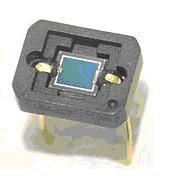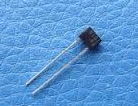the types of diodes and functions in electronic circuits
on this occasion , I will discuss the types of diodes , and functions in electronic circuits .
There are various types of diodes are made in accordance with its function . without leaving the characteristics and specifications , such as a diode rectifier ( rectifier ) , light emission diode ( LED ) , Zenner diodes , photodiodes ( Photo - Diode ) and Diodes Varactor .
The following I present some kind along with the function of the diode
Rectifier diodes
Is a type of diode rectifier diodes made from silicon material , which serves as a rectifier voltage / current from alternating current ( AC ) to direct current ( dc ) , or change the AC current into dc .
The legs of the diode are the cathode leg marked with lines on the ends

DIODE-ZENER
Zener diode is a diode junction P and N are made from raw material silicon . This diode is also known as Voltage Regulation Diode , which works on a reverse area ( quadrant III ) . Potential zener diode ranges from 2.4 to 200 volts with power dissipation from ¼ to 50 watts .This diode breakdown voltage phenomenon inspired the creation of an electronic component called Zener diodes relatives . There is no difference in the basic structure of a Zener diode . By giving the amount of doping is more at the junction P and N , it turns the diode breakdown voltage can be more quickly achieved. If the diode is usually only occurred breakdown at a voltage of hundreds of volts , the Zener may occur in the numbers of tens and units of volts

In the datasheet there Zener voltage Vz which has amounted to 2 volts , 5.6 volts , and so on . The function of these components is usually used for securing the circuit after the Zener voltage .
Consider the following circuit , the input voltage will be coming to another circuit , and the load will be limited by the zener diode . If the input voltage is below 5.6V , the diode does not conduct current so that the current will flow to other circuits and loads . If the input voltage reaches 5.6 V or more it will happen breakdown zener diode and current will flow through the diode and not to the circuit or load .
Light emitting diode
A light emitting diode or LED is known by the acronym of Solid State Lamp which is a combination of electronic devices with optical electronics , so it is classified in the family " Optoelectronic " . While the electrodes the same as the other diodes , the anode ( + ) and cathode ( - ) . There are three general categories of use LEDs, namely :
- As an indicator light ,
- For the transmission of light signals are modulated within a certain distance ,
- As electronic circuits isolated coupling in total. Symbol,
wake up physically and construction is shown in the following figure .
The basic ingredients used in the manufacture of LEDs is a material gallium arsenide ( GaAs ) or gallium arsenide Phosphide ( GAAP ) or Gallium also Phosphide ( GaP ) , these materials emit light with different colors . GaAs material emits infra - red light , the light emitting material Grasp red or yellow , while the GaP materials emit red or green light .
As with other electronic devices , LEDs have a limited amount of value where voltage advancement of differentiated types of color

Meanwhile, a large LED forward current standard is about 20 mA . Because it can emit light , the LED test is easy, simply by combining it with a small dc voltage source or by ohmmeter polarity corresponding to the electrodes .
Conventional LEDs are made from inorganic mineral varied so as to produce a color as follows :
* Aluminium Gallium arsenide ( AlGaAs ) - red and infrared
* Gallium Aluminium Phosphide - green
* Gallium arsenide / phosphide ( Gasp ) - red , orange - red , orange , and yellow
* Gallium Nitride ( GaN ) - green , pure green ( or emerald green ) , and blue
* Zinc selenide ( ZnSe ) - Blue
* Gallium Phosphide ( GaP ) - red , yellow , and green
* Indium Gallium Nitride ( InGaN ) - turquoise and blue
* Indium Gallium Aluminium Phosphide - orange - red , orange , yellow , and green
* Silicon Carbide ( SiC ) - Blue
* Diamond ( C ) - ultraviolet
* Silicon ( Si ) - blue ( in development )
* Sapphire ( Al2O3 ) - Blue
PHOTO-DIODE

The light-emitting diode, works in the area of reverse, so only leakage currents are passed. In dark conditions, the current that flows about 10 A for light-emitting diode, the base material 1A for germanium and silicon materials. Strong light and temperature circumference can increase leakage current because it can change the resistance value, which is getting the stronger light that illuminates the smaller the resistance value of the light-emitting diode. The use of light diodes which are as a sensor in the reading of the data tape perforated (Punch Tape), wherein the perforated tape located between the light source and a light-emitting diode.If any holes that pass between the tape before, then the light entering the hole would be accepted by a light diode, and is converted into electrical signals. While the use of more powerful is the light meter (Lux-Meter), which in the dark light diode resistance is high. whereas if exposed to the light will turn lower. In addition, many light-emitting diodes is used as a sensor protection system (security), for example in the use of the alarm.
DIODE VARACTOR

Diodes Varactor known as its capacity has the capacity of changing if given voltage . These diodes work area like a Zener diode reverse . The manufacture of this varactor diode is a silicon diode which is the nature of the capacitance depends on the voltage applied to it . If the voltage rises more voltage , capacity will drop . Varikap diodes are widely used in radio and television receivers at the sound settings ( Audio ) .
DIODE SCHOTTKY DIODE SCR

stands for Silicon Control Rectifier . Is a diode that has a function as a controller. SCR or thyristors still belongs to the family of semiconductors with characteristics similar to thyratron tube . As the controller is a gate ( G ) SCR is often called Thyristor . SCR is actually a mixture of P and N. The contents consist of a PNPN SCR ( Positive Negative Positive Negative ) and is usually called PNPN Triode .

Tidak ada komentar:
Posting Komentar